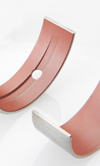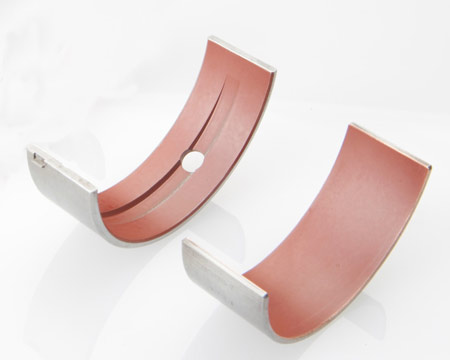The silent danger?
 There has been much discussion of late about the FIA's proposal to ban the use of the engine in the Formula One pit lane and using only electric motors during pit stops. On the face of it this may appear to be dangerous, since the noise from a traditional reciprocating unit serves to warn of its approach. On reflection, however, by the time the 2014 regulations come into place, electric vehicles, we are led to believe, will be not such a rarity on the roads, and the problem we will all have to live with in future - that of near-silent road transport - will at least be more familiar. The issue of near-silent racecars travelling along the pit lane therefore, while a valid concern, is one that in my opinion can be easily remedied.
There has been much discussion of late about the FIA's proposal to ban the use of the engine in the Formula One pit lane and using only electric motors during pit stops. On the face of it this may appear to be dangerous, since the noise from a traditional reciprocating unit serves to warn of its approach. On reflection, however, by the time the 2014 regulations come into place, electric vehicles, we are led to believe, will be not such a rarity on the roads, and the problem we will all have to live with in future - that of near-silent road transport - will at least be more familiar. The issue of near-silent racecars travelling along the pit lane therefore, while a valid concern, is one that in my opinion can be easily remedied.
Dangerous enough as it may appear and rather than people stepping out in front of pit lane traffic, my primary concern is for the engine bearings - an issue that, perhaps rather predictably, has escaped many correspondents.
When an engine is stationary, the crankshaft settles onto the main bearings, and with no oil film separating them metal-to-metal contact occurs. At the point of initial cranking, there will be no oil pressure since the oil pump itself is stationary; there will therefore be no lubricant present to separate bearing and journal. Students of tribology refer to this as boundary lubrication conditions, and for a couple of revolutions or more during cranking and initial fire, bearing wear can take place.
With lubrication conditions so very different from those that exist during the normal high-speed, high-load running, bearings intended to cope with frequent stop-start regimes will need to be redesigned. A Formula One engine is designed to start only a limited number of times, and increasing this by a factor of, say, three, four or maybe ten will give bearing designers much to think about.

In the world of road-going transport, where hybrid internal combustion/electric motors are becoming more common, the issue is a very real one. Before the introduction of this so-called stop-start technology an engine might be expected to start somewhere between 5000 and 10,000 times during its life. That is 5000-10,000 times with little lubrication present and the accumulated wear that will inevitably occur. The introduction of stop-start technology when the engine switches off automatically as the vehicle comes to rest, and restarts as soon as the throttle is pressed again, has increased this by perhaps ten-fold, so bearings are now being designed to cope with this extra level of distress when the bearing is so vulnerable.
The ban on the use of lead - perhaps one of the best bearing materials available - in road transport engines under a European Directive for 2011 has encouraged a whole new range of alloys based on aluminium with various overlays, one of which is copper-tin. However, the introduction of stop-start technology has necessitated the development of an alternative overlay consisting of PolyAmidelmide (Pal) resin binder, into which undisclosed ceramic additives are finely dispersed.
These provide the desired properties of wear resistance, mechanical strength, thermal conductivity and embeddability so essential for a bearing at low to medium speeds. At high speeds, however, the thermal conductivity of the substrate is limited, so if the product is to be used in higher-speed engines then it requires more development. While not directly applicable to Formula One, since lead is not strictly banned under the terms of the Directive, nevertheless there is a clear challenge to produce more durable bearings should the ban be adopted.
So while everyone else is arguing about the safety aspects of electric pit lane running, spare a thought for the bearing designer who, unbeknown to most, will have to make it all work.
Fig. 1 - Polymer-coated bearing (Courtesy of Federal Mogul)
Written by John Coxon